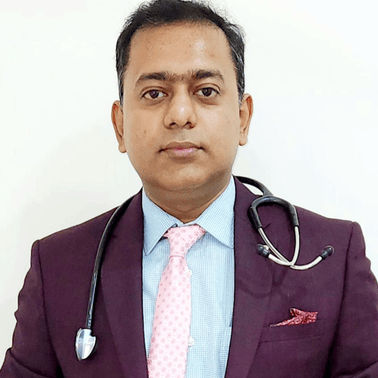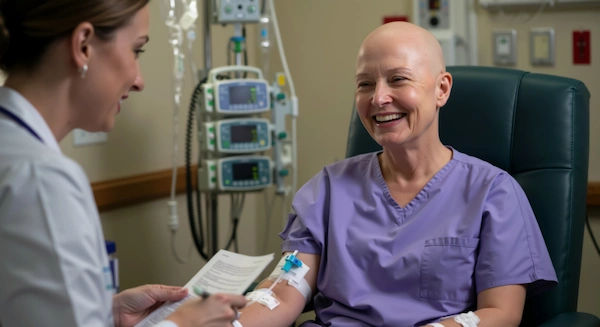Guide to Cancers In Children And Its Prevention
Learn about childhood cancers, their common types, early warning signs, and prevention strategies. Empower yourself with knowledge to support your child's health and detect issues early.

Written by Dr. Dhankecha Mayank Dineshbhai
Reviewed by Dr. Shaik Abdul Kalam MD (Physician)
Last updated on 23rd Sep, 2025

Introduction
Childhood cancer is a phrase that strikes fear into the heart of any parent. While thankfully rare, it remains the leading cause of death by disease among children. Understanding this group of diseases is the first step toward empowerment. Unlike cancers in adults, which are often linked to lifestyle factors, childhood cancers frequently arise from early-life DNA changes that are largely unpreventable. This guide aims to demystify the subject, providing clear information on the common types, crucial warning signs to watch for, and a realistic look at the possibilities for prevention. Our goal is not to alarm, but to arm you with knowledge, because in the world of paediatric health, awareness and early detection can make a profound difference. We will explore the facts, separate myth from reality, and discuss how to support your child's health every step of the way.
What Are the Most Common Types of Cancer in Children?
Childhood cancers are distinct from adult cancers in where and how they develop. They often occur in developing tissues and systems, such as the blood, brain, and nervous system. The most common types include:
Leukaemias: The Most Prevalent Childhood Cancer
Leukaemias, cancers of the bone marrow and blood, account for about 28% of all childhood cancers. Acute
lymphocytic leukaemia (ALL) and acute myeloid leukaemia (AML) are the most common types. They occur when the bone marrow produces a large number of abnormal white blood cells that crowd out healthy cells, leading to infections, anaemia, and easy bruising.
Brain and Central Nervous System (CNS) Tumours
Making up about 26% of childhood cancers, brain and spinal cord tumours are the second most common type. These include gliomas and medulloblastomas. Symptoms often relate to the tumour's location and pressure on the brain, causing headaches, nausea, balance problems, and vision changes.
Neuroblastoma: A Cancer of the Nerve Tissues
This cancer arises from immature nerve cells and typically occurs in infants and young children under 5. It accounts for about 6% of childhood cancers and often starts in the abdomen, presenting as a swelling. It is known for its wide range of behaviours, from spontaneously disappearing to being very aggressive.
Wilms Tumour: A Kidney Cancer in Young Children
Wilms tumour (nephroblastoma) is a cancer that primarily affects the kidneys, usually in children aged 3-4. It represents about 5% of childhood cancers. A parent might notice a swelling or lump in the abdomen, and it is often caught during a routine paediatric check-up.
Lymphomas: Hodgkin and Non-Hodgkin
Lymphomas start in the lymph nodes or other lymph tissues like the tonsils or thymus. They can affect the bone marrow and other organs. Symptoms include swollen lymph nodes, fever, weight loss, and night sweats. Hodgkin lymphoma is more common in older teens and young adults, while Non-Hodgkin lymphoma can occur in younger children.
Consult a Paediatric Oncologist for the best advice
Recognising the Warning Signs: Symptoms of Childhood Cancer
Early detection is critical for successful treatment. However, the symptoms of paediatric cancer often mimic those of common childhood illnesses. Persistence and a combination of symptoms are key indicators.
General Symptoms That Warrant a Doctor's Visit
- Unexplained and persistent fever or illness.
- Fatigue and paleness: A noticeable lack of energy and a pale appearance, which could indicate anaemia.
- Easy bruising or bleeding: Unexplained bruises, red or purple spots on the skin, or frequent nosebleeds.
- Lumps or masses: Any unusual lump or swelling, particularly in the abdomen, neck, chest, pelvis, or armpits.
- Unexplained weight loss.
- Persistent headaches, often accompanied by vomiting in the morning.
Specific Symptoms Linked to Certain Cancers
- Eye changes: A white pupil or sudden squint can be a sign of retinoblastoma.
- Bone pain: Persistent pain in bones, joints, or back, or swelling that doesn't subside, can be a symptom of bone cancer like osteosarcoma or leukaemia.
- Balance problems and seizures: Can be associated with brain tumours.
- Recurrent infections: A sign that the immune system is compromised, as can happen with leukaemia.
If your child exhibits any persistent or concerning combination of these early warning signs of cancer in children, it is crucial to consult a paediatrician promptly. If symptoms persist beyond two weeks, consult a doctor online with Apollo24|7 for further evaluation and guidance.
The Critical Question: Can Childhood Cancer Be Prevented?
This is one of the most common and heartbreaking questions parents have. The honest answer is that, due to the largely unknown and genetic nature of most childhood cancers, there is no guaranteed way to prevent them. This is a key difference from many adult cancers, where lifestyle changes can significantly reduce risk. However, this doesn't mean we are entirely powerless. A focus on risk reduction and early detection is our strongest tool.
The Limits of Prevention: Why Most Cases Are Unavoidable
The vast majority of childhood cancers are believed to result from random mutations in the genes of growing cells. These mutations are not inherited and there is no way to predict or stop them. They are not caused by anything a parent did or did not do. This understanding is crucial to alleviating unnecessary guilt and focusing energy on vigilance and support.
Actionable Steps for Risk Reduction and Early Detection
While we can't prevent most cases, we can take steps to minimise known risks and maximise the chances of early detection, which dramatically improves outcomes.
Prioritising a Healthy Lifestyle from the Start
Encouraging a balanced diet rich in fruits and vegetables, regular physical activity, and adequate sleep supports a robust immune system. While not a direct prevention for childhood cancer, a healthy body is better equipped to handle the rigors of treatment if needed.
Understanding and Mitigating Environmental Risks
Limit exposure to known carcinogens. This includes:
- Avoiding ionising radiation: Ensure medical imaging (like CT scans) is only done when absolutely necessary and with proper shielding.
- Reducing exposure to chemicals: This includes secondhand smoke, pesticides, and industrial pollutants. There is some evidence linking parental smoking to an increased risk of certain childhood cancers.
- Sun protection: To prevent skin cancers later in life, instill good sun safety habits early.
The Role of Genetic Counselling in High-Risk Families
For a very small percentage of children, cancer risk is inherited. This is often due to a known familial cancer syndrome (like Li-Fraumeni syndrome). If there is a strong family history of childhood cancers or specific cancers across generations, genetic counselling can help assess risk and discuss options. This is not about prevention in the traditional sense, but about heightened surveillance for early detection.
Conclusion: Empowerment Through Awareness and Vigilance
Navigating the topic of childhood cancers is daunting. The emotional weight is heavy, and the scientific reality is that absolute prevention remains out of reach for now. However, this guide underscores that empowerment comes not from fear, but from knowledge. By understanding the common types, committing the warning signs to memory, and maintaining a proactive relationship with your child's paediatrician, you become their most powerful advocate.
The landscape of paediatric oncology is one of incredible hope. Research continues to advance, leading to more targeted therapies with fewer side effects. The focus has rightly expanded from mere survival to ensuring a high quality of life for survivors. As a parent, your role is vital: trust your instincts, prioritise regular check-ups, and create a healthy environment for your child to thrive. If you ever have concerns about persistent symptoms, do not hesitate to seek professional medical advice. Your vigilance could make all the difference.
Consult a Paediatric Oncologist for the best advice
Consult a Paediatric Oncologist for the best advice

Dr Garima Nirmal
Paediatric Haematologist
8 Years • MBBS, MD, DM
Delhi
Apollo Hospitals Indraprastha, Delhi

Dr Bharath Kumar S
Paediatrician
5 Years • MBBS MD
Bengaluru
PRESTIGE SHANTHINIKETAN - SOCIETY CLINIC, Bengaluru

Dr Minakshi Bansal
Paediatric Haematologist
8 Years • MBBS, MD PEDIATRICS, FIAP (PHO)
Delhi
Apollo Hospitals Indraprastha, Delhi
(25+ Patients)
Dr. B Shravanthi Reddy
Radiation Specialist Oncologist
8 Years • MBBS, DNB(Radiation Oncology)
Manikonda Jagir
Apollo Clinic, Manikonda, Manikonda Jagir

Dr. Sanchayan Mandal
Medical Oncologist
17 Years • MBBS, DNB Raditherapy, DrNB Medical Oncology
East Midnapore
VIVEKANANDA SEBA SADAN, East Midnapore
Consult a Paediatric Oncologist for the best advice

Dr Garima Nirmal
Paediatric Haematologist
8 Years • MBBS, MD, DM
Delhi
Apollo Hospitals Indraprastha, Delhi

Dr Bharath Kumar S
Paediatrician
5 Years • MBBS MD
Bengaluru
PRESTIGE SHANTHINIKETAN - SOCIETY CLINIC, Bengaluru

Dr Minakshi Bansal
Paediatric Haematologist
8 Years • MBBS, MD PEDIATRICS, FIAP (PHO)
Delhi
Apollo Hospitals Indraprastha, Delhi
(25+ Patients)
Dr. B Shravanthi Reddy
Radiation Specialist Oncologist
8 Years • MBBS, DNB(Radiation Oncology)
Manikonda Jagir
Apollo Clinic, Manikonda, Manikonda Jagir

Dr. Sanchayan Mandal
Medical Oncologist
17 Years • MBBS, DNB Raditherapy, DrNB Medical Oncology
East Midnapore
VIVEKANANDA SEBA SADAN, East Midnapore
More articles from Cancer Pain Management
Frequently Asked Questions
1. What is the most common sign of leukaemia in a toddler?
Common signs include persistent fatigue and paleness, frequent fevers or infections, easy bruising or bleeding, bone or joint pain, and loss of appetite. A toddler might also appear lethargic and less interested in play.
2. Can childhood cancer be detected before birth?
In very rare cases, certain cancers like neuroblastoma or teratomas can be detected on a routine prenatal ultrasound. However, the vast majority of childhood cancers are diagnosed after birth, often in early childhood.
3. Is there a link between vaccines and childhood cancer?
No. Extensive research has found no link between childhood vaccinations and an increased risk of any type of cancer. In fact, some vaccines, like the HPV vaccine, prevent cancers that can occur later in life.
4. How can I best support a family whose child has cancer?
Practical support is most helpful. Offer to cook meals, run errands, care for siblings, or simply be a listening ear without judgment. Avoid offering unsolicited medical advice and respect the family's privacy and needs.
5. What are the long-term effects of childhood cancer treatment?
Survivors may face 'late effects,' which can include heart or lung problems, growth and fertility issues, learning difficulties, and a small risk of secondary cancers later in life. This is why lifelong follow-up care with a specialist is essential.
